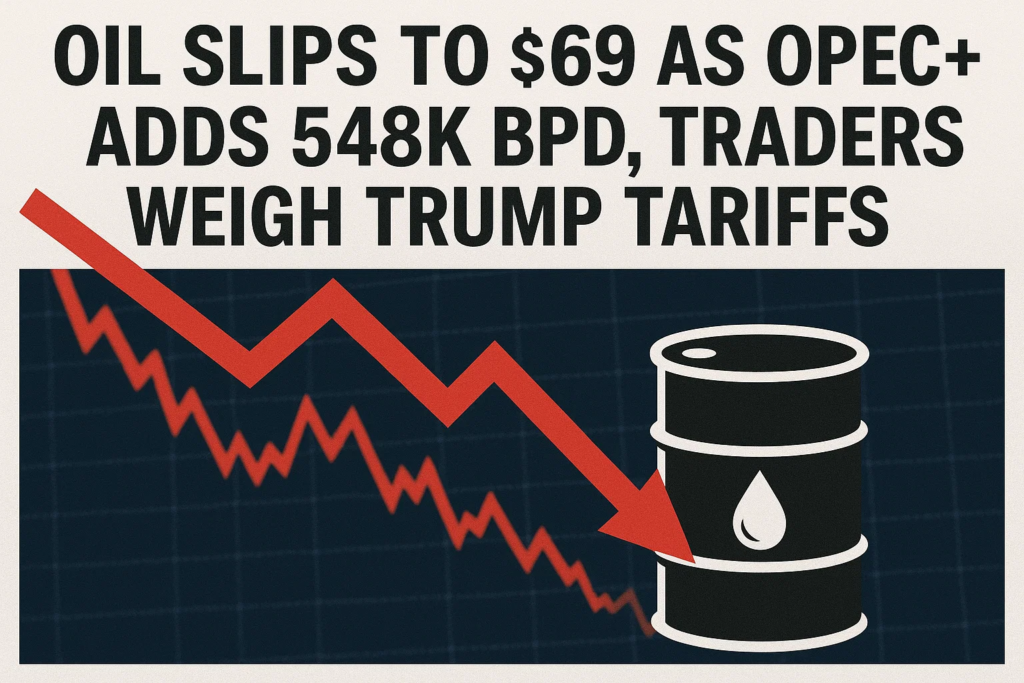Oil prices pulled back on Tuesday after a near 2% rally, with traders digesting U.S. tariff developments and OPEC+ plans to raise production by 548,000 barrels per day (bpd) in August.
Brent crude futures edged down 0.2% to $69.46 a barrel by 10:43 GMT, while U.S. West Texas Intermediate (WTI) slipped 0.4% to $67.68. The retreat came as investors assessed the potential drag from higher U.S. tariffs and the impact of increased supply from the producer alliance.
U.S. President Donald Trump indicated sharply higher tariffs would begin August 1 but signaled flexibility, stating the deadline was “not 100% firm.” This added uncertainty around global economic growth and oil demand.
Rystad analyst Janiv Shah noted that while OPEC+ is unwinding its voluntary output cuts, geopolitical risks, including Houthi attacks on cargo ships, and tightness in middle distillate supplies continue to support prices.
OPEC+ Plans August Hike Amid Demand Risks
The OPEC+ group, including the Organization of the Petroleum Exporting Countries and allies, agreed on Saturday to increase output by 548,000 bpd in August, surpassing previous monthly hikes of 411,000 bpd.
Key points:
- OPEC+ plans 548K bpd output increase for August.
- Follows 411K bpd increases over the prior three months.
- Nearly unwinds all 2.2 million bpd voluntary cuts made since 2023.
- A September increase of 550K bpd is expected at the next OPEC+ meeting on August 3, fully reversing prior cuts.
Investors had turned bullish ahead of peak U.S. summer demand, with Commodity Futures Trading Commission data showing money managers increased net-long positions in crude futures and options during the week ending July 1.
However, HSBC analysts cautioned that once seasonal demand declines, higher OPEC+ exports could pressure prices, warning of downside risks. Commerzbank expects Brent prices could retreat to $65 per barrel as oversupply emerges in autumn.
Tariffs, Demand Concerns Weigh on Outlook
Trump’s tariff threats are raising market concerns about potential hits to global demand, with Asian and African economies likely impacted by the measures. The broader oil market is balancing this risk with summer demand resilience in the U.S.
Meanwhile, traders will monitor:
- U.S.-China and U.S.-Canada trade discussions for signals on tariff escalations.
- U.S. gasoline and distillate inventory data for demand cues.
- Global macro indicators, including PMI figures, for insight into economic momentum.
While supply increases loom, geopolitical tensions and shipping disruptions continue to offer support to crude prices in the near term.


